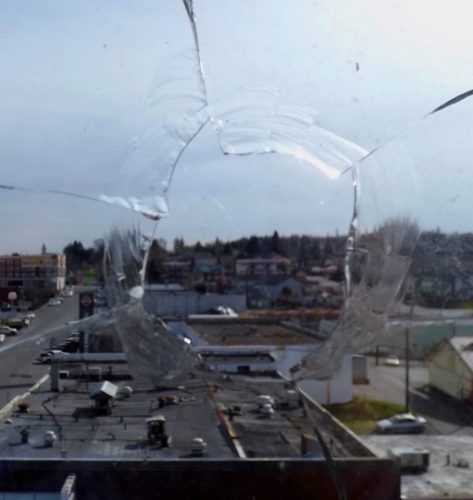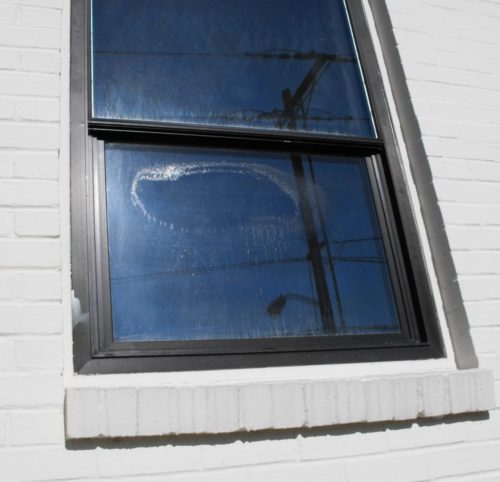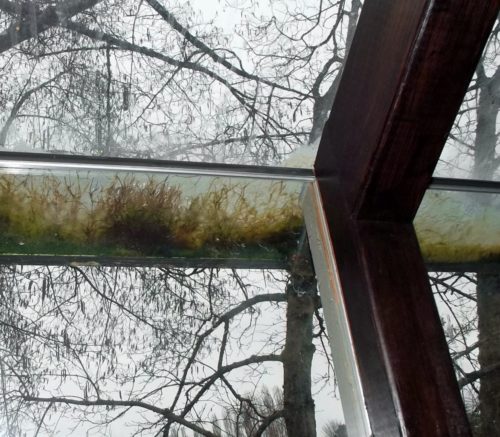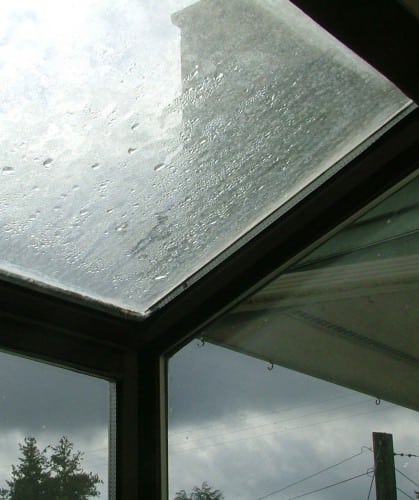
 Is it just me, or is anyone else sick of seeing failed window seals and the apparent inability of these seals to last more than 20 years? In some cases I am seeing whole developments of houses with windows failing as early as 12 to 15 years due to failure of a particular type of spacer between the two panes of glass.
Is it just me, or is anyone else sick of seeing failed window seals and the apparent inability of these seals to last more than 20 years? In some cases I am seeing whole developments of houses with windows failing as early as 12 to 15 years due to failure of a particular type of spacer between the two panes of glass.
 If the purported energy savings of double pane windows is difficult to defend, it certainly does not pencil out if those windows have to be replaced every 20 years–even if it is only the glass part. Generally speaking, when replacing your windows, they will almost never save you in energy costs, amortized over the number of years the sales person would like you to believe, what the replacement and installation costs of the new windows will be. This of course can vary with energy costs and location and other factors, but generally speaking this is true in relatively moderate climates like Seattle.
If the purported energy savings of double pane windows is difficult to defend, it certainly does not pencil out if those windows have to be replaced every 20 years–even if it is only the glass part. Generally speaking, when replacing your windows, they will almost never save you in energy costs, amortized over the number of years the sales person would like you to believe, what the replacement and installation costs of the new windows will be. This of course can vary with energy costs and location and other factors, but generally speaking this is true in relatively moderate climates like Seattle.
 I think it may be time to rethink the whole notion of double pane glass, sealed units–or units that have special gasses installed in them that increases their efficiency, cost and failure rate.
I think it may be time to rethink the whole notion of double pane glass, sealed units–or units that have special gasses installed in them that increases their efficiency, cost and failure rate.
Surely it costs money and consumes resources to make glass. There are houses a couple of hundred years old with original single pane glass that suffer from the poor condition of wood sashes and exposure—but not from failure of the glass. Glass is pretty dang durable stuff—and it is VERY cheap, being made out of one of the most abundant resources on the planet.
Why not go back to window installations, more like the storm window approach?
 Several manufacturers’ of windows have, in the past, made (and still do in at least one case—Pella) windows with a removable panel. These windows were quite efficient and easily repaired if damaged. If a kid kicks a soccer ball through a sealed unit window, and only breaks one pane, the entire glass unit must be replaced. If it was a removable panel type window only one glass pane might have to be replaced and thereby having a less serious impact on the kid’s allowance.
Several manufacturers’ of windows have, in the past, made (and still do in at least one case—Pella) windows with a removable panel. These windows were quite efficient and easily repaired if damaged. If a kid kicks a soccer ball through a sealed unit window, and only breaks one pane, the entire glass unit must be replaced. If it was a removable panel type window only one glass pane might have to be replaced and thereby having a less serious impact on the kid’s allowance.
The failed seal issue, though, is what really gets me. There are no failed seals in windows with removable panels. These windows could theoretically (sans the occasional soccer ball) last indefinitely and contribute to huge savings in energy and the use of natural resources over the lifetime of the house–or even in reuse beyond the life of the house.
 I think it is false economy to think that sealed glass units are saving tremendous amounts of energy over what removable panel windows would save. The more complicated these windows get, with the fancy gases and the triple panes, the more difficult it becomes to justify the costs. It seems that any small amount of supposed savings, that could theoretically be gleaned, could be more than offset by focusing more on whole building air leakage, better use of insulation and slightly smaller windows—not to mention more careful planning of window location. Just not having every window in the house an opening type window would represent a huge savings. They should open where necessary for egress and ventilation. Most houses have many windows that never need to be opened and never get opened—so why are they openable type?.
I think it is false economy to think that sealed glass units are saving tremendous amounts of energy over what removable panel windows would save. The more complicated these windows get, with the fancy gases and the triple panes, the more difficult it becomes to justify the costs. It seems that any small amount of supposed savings, that could theoretically be gleaned, could be more than offset by focusing more on whole building air leakage, better use of insulation and slightly smaller windows—not to mention more careful planning of window location. Just not having every window in the house an opening type window would represent a huge savings. They should open where necessary for egress and ventilation. Most houses have many windows that never need to be opened and never get opened—so why are they openable type?.
Another thing that could be done with removable pane windows is that one could have a changeable panel that would allow for reflective coatings in the summer and no coatings in the winter. This would allow for the home to benefit from more solar gain when desired. Windows with reflective coatings can actually increase the heating needs of houses in cold climates by limiting solar gain the same way no coatings increases cooling loads in the summer.
Removable panel windows could also be fitted with insulating blinds that could be used to recoup any supposed reduction in efficiency between the two types. Regardless the arguments, over the long-term life of the house, it seems unlikely there would be any meaningful energy savings by choosing sealed units over removable panel units.
We are fighting over miniscule relative increases in R-value between the double pane windows and the most expensive triple pane windows full of “hot-air” gases. It is better in my opinion to spend money in more productive ways, until someone smarter than me invents High-R Glass–that one can still see through, let’s light in and automatically polarizes itself by season.
It seems that we are making expensive choices to save a few dollars when those same dollars could be spent in ways that could actually provide more long term energy and resources savings.
There will never be a perfect solution as long as we want to get in and out of our boxes, breath in our boxes and have natural light in our boxes. The question becomes one of where to spend our money on offsetting all the compromises.
By Charles Buell, Real Estate Inspections in Seattle
If you enjoyed this post, and would like to get notices of new posts to my blog, please subscribe via email in the little box to the right. I promise NO spamming of your email!
